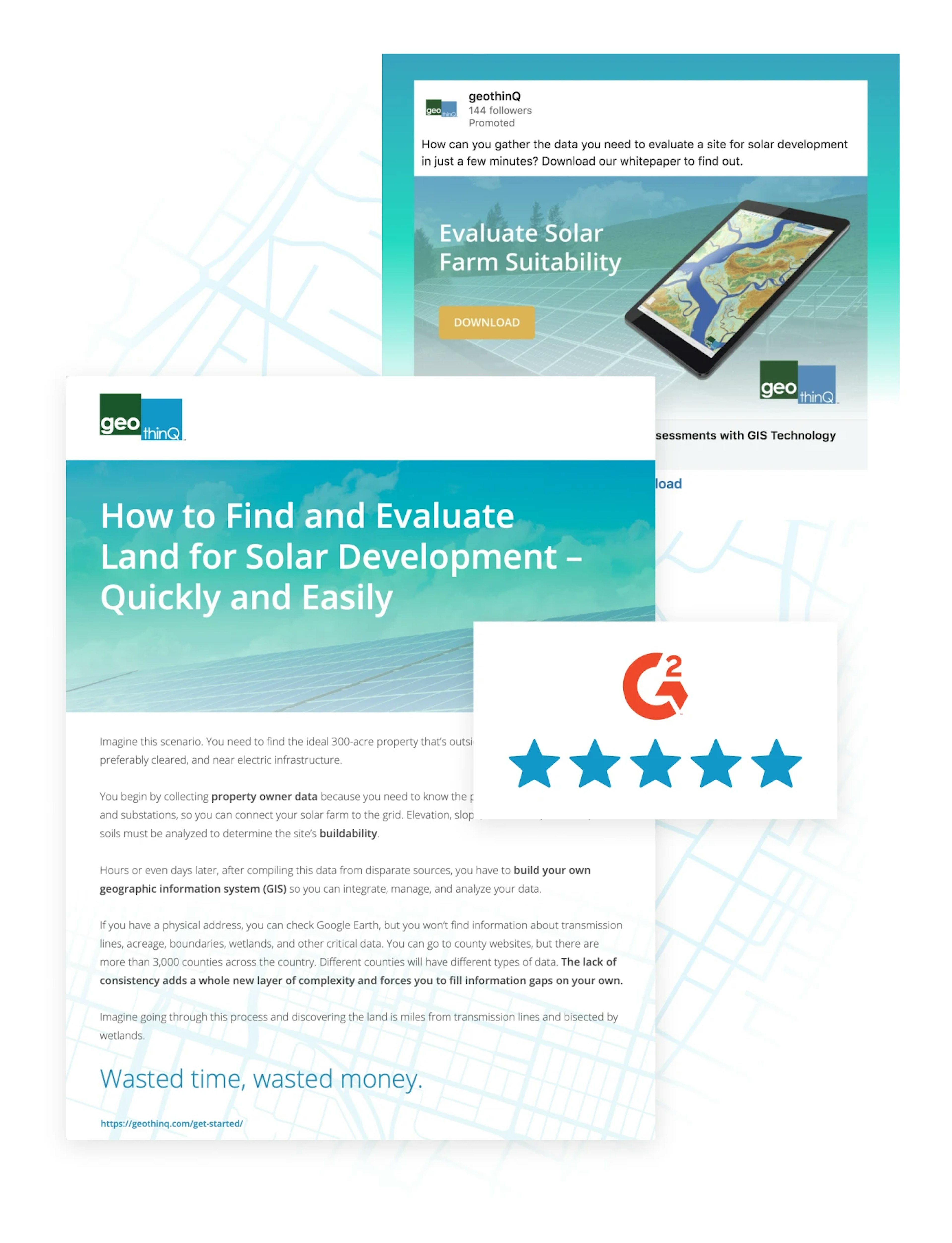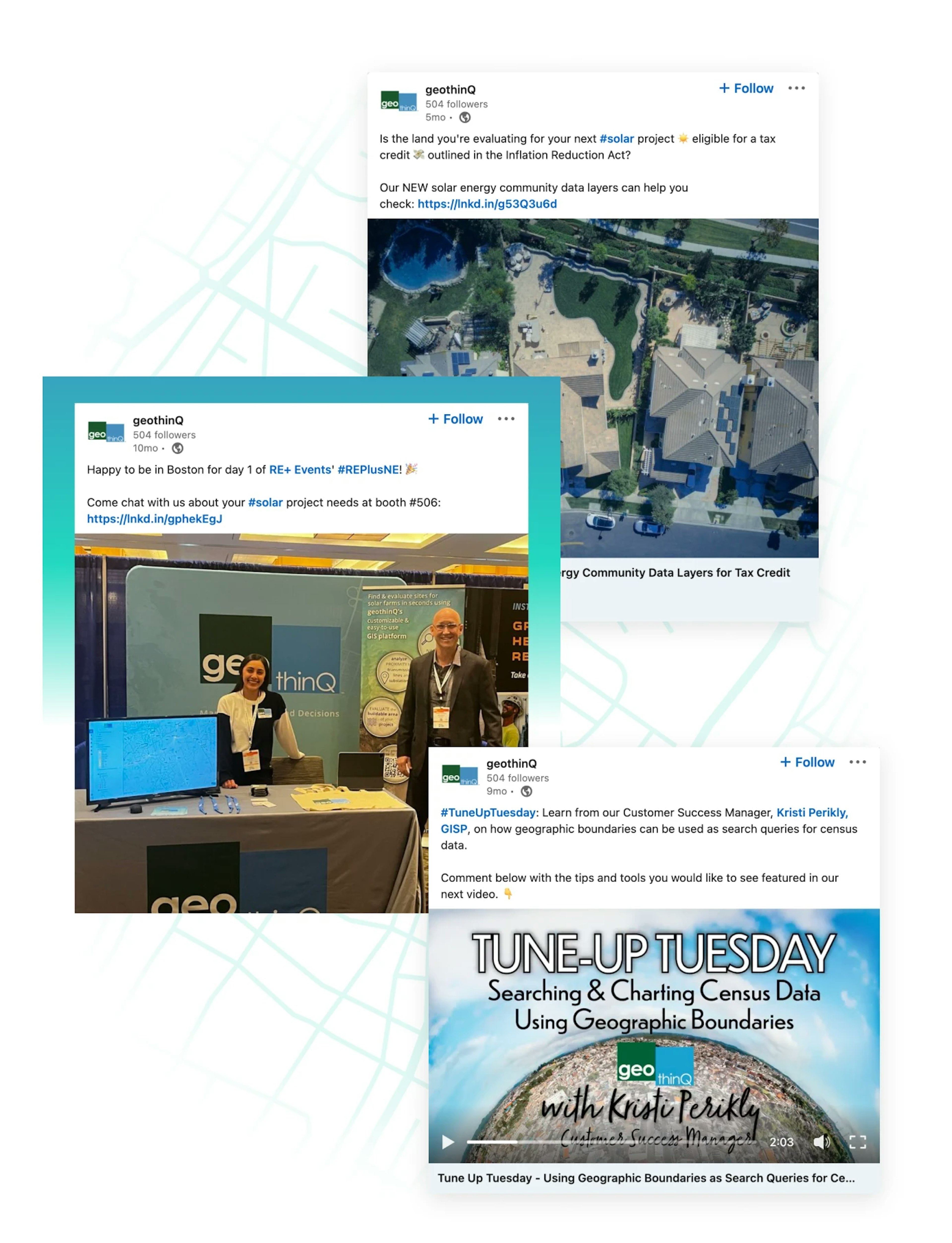

As geothinQ expanded its user base, it was time to also focus on retaining those customers. With HubSpot, we segmented customers based on industry, lifecycle stage, product usage and more. Then, we created a corresponding customer success email marketing strategy to help users get even more out of geothinQ. Now, geothinQ could deliver timely communications to current users, including platform updates and news, in order to make the product stickier and build brand loyalty. We also created a plan to generate online reviews from loyal users, resulting in 5-star feedback on Capterra and G2.
Alloy drove hundreds of online signups and conversions, consistently delivering quarter-over-quarter customer growth.

Top-of-funnel content that drives leads
To attract prospects and get them into geothinQ’s sales funnel, Alloy developed regular, SEO-rich blog content, frequently with a call-to-action to learn more via gated content that spoke to the challenges geothinQ’s audiences were facing and how they could solve them. This built a strong database of potential users we then nurtured through advertising and email marketing.
Remaining top of mind through ads & optimization
Search, display and social media advertising drove traffic to this top-of-funnel content. Once a user visited geothinQ’s site, Alloy brought them further along in the buyer’s journey through strategic retargeting ads. Ongoing optimizations to our ad strategy ensured we continued to hit the right targets, aligned bidding with market needs and pushed creative that resonated with buyers.
Humanizing a supportive brand on social media
One of geothinQ’s key differentiators is the people behind its personalized support. Allowing geothinQ’s customer success team to shine, Alloy provided strategic counsel on social media optimization, ongoing content and quality listening to create a community of support that reached beyond geothinQ’s platform.
Introducing a demo request to further ease users into adoption
In 2023, we saw a decline in the number of prospects willing to immediately commit to a geothinQ trial. To combat this trend, we introduced a demo option that would let prospects see more of the platform before signing up, which resulted in 50 demos in the first 6 weeks alone, helping users feel confident in their decision to try geothinQ.
“Alloy is an extremely knowledgeable team of marketing and PR experts and has become crucial to our ongoing success.”
— Chris Nichols, General Manager